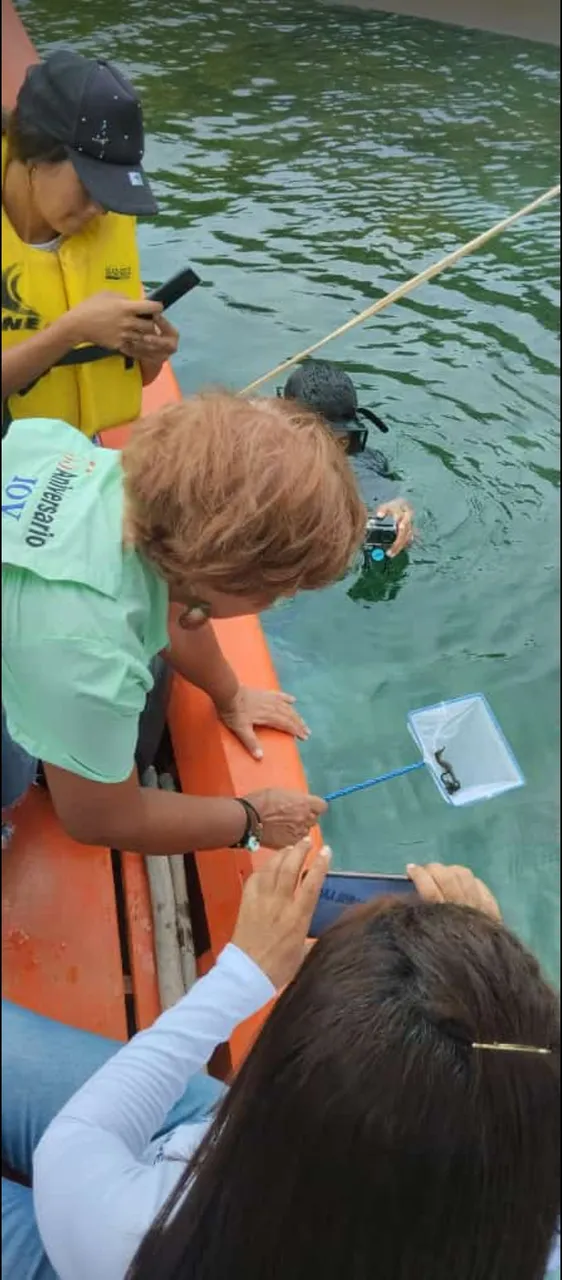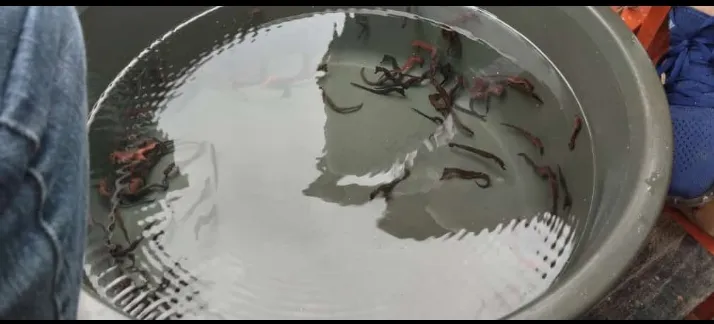Liberar caballitos de mar criados en cautiverio fue una experiencia verdaderamente emocionante. La emoción comenzó cuando llegamos al acuario local que tenía una gran cantidad de caballitos de mar en cautiverio. Allí, nos recibieron los cuidadores del acuario, quienes nos dieron una introducción sobre los caballitos de mar y el impacto que la cría en cautiverio tiene en su supervivencia.

Nos explicaron que la cría en cautiverio se realiza para proteger a los caballitos de mar de la depredación y la pesca excesiva en su hábitat natural. Sin embargo, los caballitos de mar criados en cautiverio no tienen la misma capacidad de supervivencia que los que nacen en la naturaleza, ya que no han desarrollado las habilidades necesarias para sobrevivir en su entorno natural.
Después de la introducción, nos llevaron al área donde se criaban los caballitos de mar. Allí, vimos a los caballitos de mar en pequeños tanques, nadando en círculos repetitivos. Fue un poco triste verlos enjaulados, aunque entendimos que era necesario para su protección.
Los cuidadores del acuario nos explicaron cómo liberaríamos a los caballitos de mar. Debíamos transportarlos en pequeñas bolsas de plástico llenas de agua y después, los liberaríamos en el mar. Nos aseguramos de que las bolsas tuvieran suficiente agua y que los caballitos de mar estuvieran sanos y fuertes.
Una vez que tuvimos todo listo, fuimos al muelle cercano al acuario. Allí, nos unimos a un grupo de voluntarios que también iban a liberar caballitos de mar. Todos estábamos emocionados, y se podía sentir la energía positiva en el aire.
Nos adentramos en el mar y comenzamos a liberar los caballitos de mar uno por uno. Fue increíble ver cómo nadaban, desplegando sus colas en el agua mientras se alejaban de nosotros. Fue una sensación de liberación, tanto para los caballitos de mar como para nosotros.

A medida que liberábamos más y más caballitos de mar, nos dimos cuenta de que estábamos haciendo algo importante. Estábamos ayudando a preservar una especie en peligro de extinción y estábamos haciendo nuestra parte para asegurar que los caballitos de mar pudieran prosperar en su hábitat natural.
Fue una experiencia verdaderamente conmovedora ver cómo los caballitos de mar nadaban lejos, libres por fin de la cautividad. Pudimos ver cómo se adaptaban al medio ambiente, cómo se mezclaban con otros animales marinos y cómo se desplazaban con gracia y facilidad.
Al final del día, estábamos agotados, pero el sentimiento de satisfacción y la emoción que sentimos al haber contribuido a la preservación de una especie valió la pena. Liberar caballitos de mar criados en cautiverio fue una experiencia única y emocionante que nunca olvidaremos.
Liberar caballitos de mar criados en cautiverio fue una experiencia emocionante e inolvidable. Fue una oportunidad para hacer nuestra parte en la preservación de una especie en peligro de extinción y ayudar a devolver a los caballitos de mar a su hábitat natural. Esperamos tener más oportunidades como esta en el futuro para continuar contribuyendo a la conservación de nuestro planeta y todas las especies que lo habitan.
Fotografías propias.
Versión en inglés
English Version
Releasing captive bred seahorses was a truly exciting experience. The excitement began when we arrived at the local aquarium that had a large number of captive seahorses. There, we were greeted by the aquarium keepers, who gave us an introduction to seahorses and the impact that captive breeding has on their survival.
They explained to us that captive breeding is done to protect seahorses from predation and overfishing in their natural habitat. However, captive-bred seahorses do not have the same survivability as those born in the wild, as they have not developed the necessary skills to survive in their natural environment.
After the introduction, we were taken to the area where the seahorses were raised. There, we saw seahorses in small tanks, swimming in repetitive circles. It was a bit sad to see them caged, although we understood that it was necessary for their protection.
The aquarium keepers explained to us how we would release the seahorses. We had to transport them in small plastic bags filled with water and then we would release them into the sea. We made sure that the bags had enough water and that the seahorses were healthy and strong.
Once we had everything ready, we went to the pier near the aquarium. There, we joined a group of volunteers who were also going to release seahorses. We were all excited, and you could feel the positive energy in the air.
We go into the sea and start to release the seahorses one by one. It was amazing to see how they swam, fanning their tails in the water as they moved away from us. It was a feeling of release, both for the seahorses and for us.
As we released more and more seahorses, we realized that we were doing something important. We were helping to preserve an endangered species and we were doing our part to ensure that seahorses could thrive in their natural habitat.
It was a truly moving experience to watch the seahorses swim away, free from captivity at last. We were able to see how they adapted to the environment, how they mixed with other marine animals, and how they moved with grace and ease.
At the end of the day, we were exhausted, but the feeling of satisfaction and excitement that came from having contributed to the preservation of a species was worth it. Releasing captive bred seahorses was a unique and exciting experience that we will never forget.
Releasing captive bred seahorses was an exciting and unforgettable experience. It was an opportunity to do our part to preserve an endangered species and help return seahorses to their natural habitat. We hope to have more opportunities like this in the future to continue contributing to the conservation of our planet and all the species that inhabit it.
Own photographs.